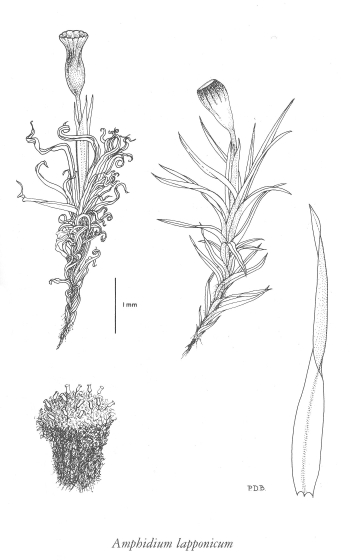E-Flora BC: Electronic Atlas of the Flora of British Columbia
Amphidium lapponicum (Hedw.) Schimp.
bottle-brush moss (Lapland amphidium moss) Orthotrichaceae Species Account Author: Wilf Schofield Extracted from Some Common Mosses of British Columbia Introduction to the Bryophytes of BC
|
||||||||||||||
